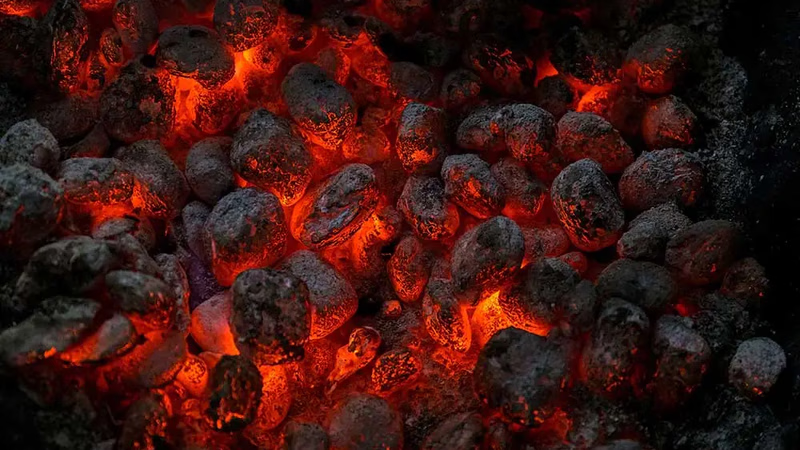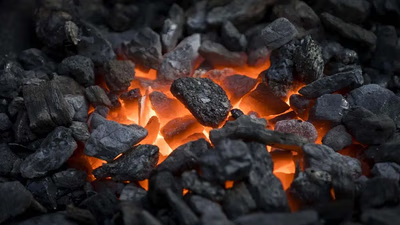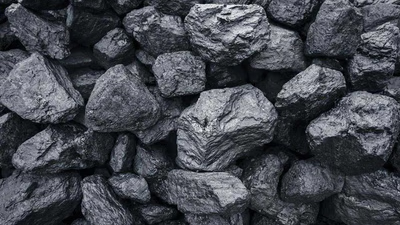
Coal production insights from major global producers.
The geographical and geological history of any country can have a great impact on its mineral reserves. Geological processes such as coal accumulation through continental plate tectonics, volcanic endogenesis and sedimentation over time lead to the formation of mineral deposits. Therefore, countries with the right geological history and the right natural processes will have the most reserves. Countries with high power and ability in the mining industry will usually have the largest mineral reserves. Capability in extracting, processing and developing mines can enable these countries to exploit and be more productive from their mineral reserves.
Advanced technology and proper infrastructure can help countries in better exploitation and productivity of mineral reserves. This includes advanced mining and processing technology, modern mining equipment, development of transportation networks, support industries and energy infrastructure. Mining policies and laws of countries can have a great impact on the development and exploitation of mineral reserves. Organizing laws, creating mineral development facilities, creating suitable investment conditions and creating industrial establishments can encourage the development and exploitation of mineral reserves in countries. Some of the countries with the largest coal reserves are as follows:
- Russia is known as one of the largest holders of coal reserves in the world. The important areas of coal deposits in Russia include the Siberian and Ural regions.
- The United States has significant coal reserves, particularly in the states of Virginia, Illinois, West Virginia, Kentucky, and Pennsylvania.
- Australia also has significant reserves of coal. Notable states include Queensland, New South Wales and Victoria.
- China is not only the largest consumer of coal in the world, but also has significant reserves, especially in the provinces of Shanxi and Hubei.
- India is also known as one of the largest holders of coal reserves in the world. The states of Jharkhand, Chhattisgarh and Orissa are among the important areas of coal deposits in India.
Advanced countries also use advanced technologies in coal processing, including the use of advanced technologies for crushing, washing, drilling and rolling coal to optimize production processes and improve the quality of the final product. Grid miners or continuous miners are machines that continuously remove coal from the edges of the mine. This method provides faster performance and more efficiency than traditional mining methods. In this method, the coal in the ground is directly converted and converted into gas on site. This method provides improvements for environmental protection and productivity of coal reserves.
In open-pit mining method, vertical or diagonal tunnels and shafts are built to access the depth of coal deposits. This method is more secure compared to surface mining and has been improved by the use of advanced technologies such as mechanized tunneling and the use of advanced machinery. In the surface mining method, coal layers are extracted directly from the surface of the earth. This method includes the use of heavy machinery such as bulldozers, cranes, loaders and shovels. Advanced techniques such as the use of 3D remote sensing models, mine modeling and the use of GPS guidance systems are also used in this method.
Russia, with the largest coal reserves in the world, normally exports a large part of its coal production. In 2020, Russia exported about 166 million tons of coal. Australia is also known as one of the largest producers and exporters of coal. In 2019, Australia exported more than 210 million tonnes of coal. Indonesia is also one of the countries with significant coal reserves. In 2019, Indonesia exported more than 450 million tons of coal. America, with significant coal resources, has a reliable export in this field. In 2020, the US exported about 37 million tons of coal. Canada is also one of the important producers and exporters of coal. In 2019, Canada exported more than 34 million tons of coal.
-

Coal demand in West Asia is primarily driven by electricity generation, with countries like Saudi Arabia, UAE, Qatar, and Oman increasingly utilizing coal. While some nations have limited coal production, Iraq, Iran, and Turkey are notable producers. Countries with fewer reserves often rely on imports to meet their energy needs. Saudi Arabia and the UAE are significant importers of coal, while Iran and others export to global markets. Various organizations provide insights into the coal market through reports on production and consumption trends. The diversification of energy sources is crucial for reducing dependence on oil; coal serves as a cost-effective alternative that is easier to store and transport. The coal industry also plays a vital role in job creation in regions like Iran. Conversely, Turkey is actively transitioning away from coal towards renewable energy sources such as solar and wind power, implementing strategies to reduce reliance on fossil fuels.
Other Middle Eastern countries are following suit by investing in clean energy technologies. Major global suppliers of coal include Russia, the USA, Australia, and Indonesia, which cater to the import needs of Middle Eastern nations.
-

Countries with favorable geological conditions and advanced mining capabilities dominate global coal reserves. Russia, the United States, Australia, China, and India are among the largest holders of coal reserves. These nations benefit from extensive deposits due to their geological history and have developed robust mining industries. Advanced technologies play a crucial role in enhancing coal extraction and processing efficiency. Techniques such as continuous mining, open-pit mining, and surface mining are employed to optimize production while ensuring safety and environmental protection. Russia leads in coal reserves and exports, followed by Australia and Indonesia, which also have significant export volumes. The U. S.
and Canada contribute to the global coal market with reliable production and export capabilities. The interplay of technology, infrastructure, and regulatory frameworks significantly influences the productivity of these countries" coal industries. "
-

Coal remains a significant energy source globally, despite a decline in usage due to advancements in renewable energy technologies. Countries like China and India continue to rely heavily on coal for electricity generation and industrial processes, particularly in steel production. The coking process converts coal into coke, which is essential for steel and aluminum manufacturing. However, the environmental impact of coal consumption is substantial, contributing to air pollution and climate change through greenhouse gas emissions. Efforts are underway in many nations to transition from coal to cleaner energy sources such as solar and wind power. This shift is driven by the need to mitigate environmental damage and promote sustainable energy practices. Technological advancements and government policies play crucial roles in this transition, with many countries investing in renewable energy infrastructure. The timeline for phasing out coal entirely varies based on regional energy needs and policy frameworks.
-

Identifying target markets for coal exports requires thorough analysis of global demand and energy needs. Key strategies include attending industry events, networking with international businessmen, and leveraging consultants for market insights. Engaging in exhibitions and conferences allows exporters to connect with potential customers and understand regional requirements. Researching market conditions, competition, and export regulations is crucial before initiating marketing efforts. Digital marketing strategies, including social media and localized content, can enhance outreach in the Middle East. Establishing partnerships with local representatives can facilitate entry into these markets. Major consumers like China and India present significant opportunities due to their reliance on coal for energy production. Japan"s dependence on imported coal further highlights the potential for exporters.
Additionally, neighboring countries such as South Korea, Thailand, and Vietnam are emerging as attractive markets due to increasing energy demands. "




